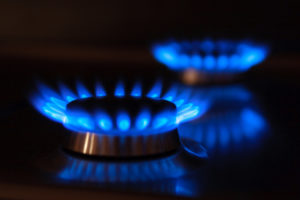 Natural gas was little changed on Thursday, keeping close to Tuesdays one-month low, as weather forecasts saw no significant overnight adjustments and the EIA is expected to report later in the day a much larger than average inventory build.
Natural gas was little changed on Thursday, keeping close to Tuesdays one-month low, as weather forecasts saw no significant overnight adjustments and the EIA is expected to report later in the day a much larger than average inventory build.
Natural gas for delivery in July traded 0.38% higher at $2.644 per million British thermal units at 7:57 GMT, shifting in a daily range between $2.646 and $2.632. The contract slid 2.4% on Wednesday to $2.634, erasing prior weekly gains.
The Energy Information Administration is expected to report today that natural gas stockpiles in the US surged by around 121-126 billion cubic feet in the week ended May 29th. If confirmed, this would sharply exceed the five-year average build of 92 bcf and turn the current deficit to the average of -18 bcf into a surplus. Supplies rose by 118 bcf a year earlier. A reading above 130 bcf would be considered as quite bearish, and one below 120 bcf – quite bullish.
Last week, the EIA said that US natural gas inventories rose by 112 billion cubic feet in the week ended May 22nd, exceeding analysts’ median estimate for a 99-bcf gain. Total gas held in US storage hubs amounted to 2.101 trillion cubic feet, narrowing a deficit to the five-year average of 2.119 trillion to 0.8% from 1.7% a week earlier.
The report after, due out on June 11th, will also reflect a much larger than normal build. The five-year average inventory gain for the week ended June 5th is 89 bcf, while stockpiles rose by 109 bcf a year earlier.
Weather outlook
According to NatGasWeather.com, natural gas demand in the US will be low compared to normal across the North through June 10th, while remaining moderate over the South, with a reaffirmed outlook for the following seven days for a warm North and very warm to hot East, South and West.
A cool weather system will continue to gradually exit off the East Coast today, with another round of showers and thunderstorms across the Southeast. As previously forecast, high pressure will strengthen across the country the coming days, especially over Florida and the South where highs will reach the 80s and lower 90s, and mid 90s for Texas.
The northern US will also warm up this weekend to reach the 70s and 80s, spelling the end of heating demand. It will become even hotter end-week and early next week over the South and Southeast as highs jump into the mid 90s and lower 100s. A weather system tracking inland over California will bring showers and thunderstorms, while the Southwest and Northwest remain quite warm.
Active weather with showers and thunderstorms will extend through next week. The South and East will remain very warm to hot, while the north-central regions of the country continue to be impacted by Canadian weather systems bringing somewhat cooler air and conditions over the West remain mixed due to arriving Pacific systems.
The main focus remains on how the pattern develops in the second part of June, with one scenario being that high pressure over the South expands northward and brings higher-than-usual temperatures over even more US regions, while the other calls for renewed cooler Canadian weather systems that would keep readings across the north-central US near normal, curbing cooling demand.
Readings
According to AccuWeather.com, the high in New York today will be 65 degrees Fahrenheit, 11 below usual, before establishing in the upper 70s and low 80s as of June 6th. Chicago will experience somewhat varying weather over the next couple of weeks, with highs shifting in a range of 5-6 degrees on both sides of the average 76-79 degrees for the period.
Down South, Houston will peak at 90-91 degrees through June 9th, matching the average, before easing a few degrees the following seven days. On the West Coast, highs in Los Angeles will be at 72-73 degrees through June 6th, below the usual 76, followed by a warm-up into the upper 70s and lower 80s afterwards.
Pivot points
According to Binary Tribune’s daily analysis, July natural gas futures’ central pivot point stands at $2.661. In case the contract penetrates the first resistance level at $2.697 per million British thermal units, it will encounter next resistance at $2.760. If breached, upside movement may attempt to advance to $2.796 per mBtu.
If the energy source drops below its S1 level at $2.598 per mBtu, it will next see support at $2.562. In case the second key support zone is breached, the power-station fuel’s downward movement may extend to $2.499 per mBtu.
In weekly terms, the central pivot point is at $2.730. The three key resistance levels are as follows: R1 – $2.827, R2 – $3.012, R3 – $3.109. The three key support levels are: S1 – $2.545, S2 – $2.448, S3 – $2.263.





